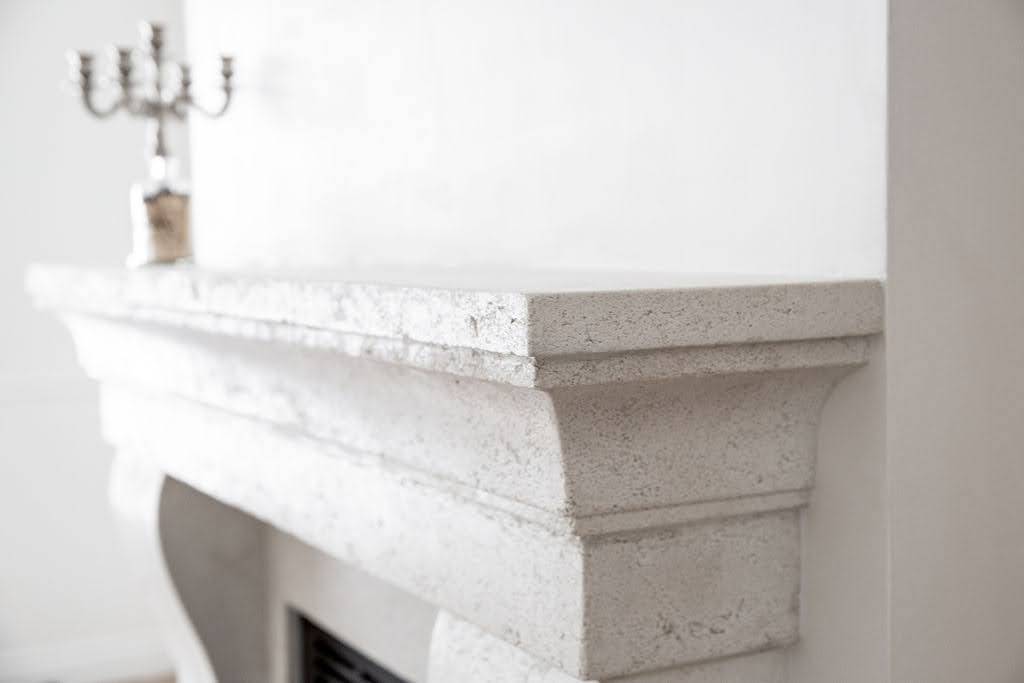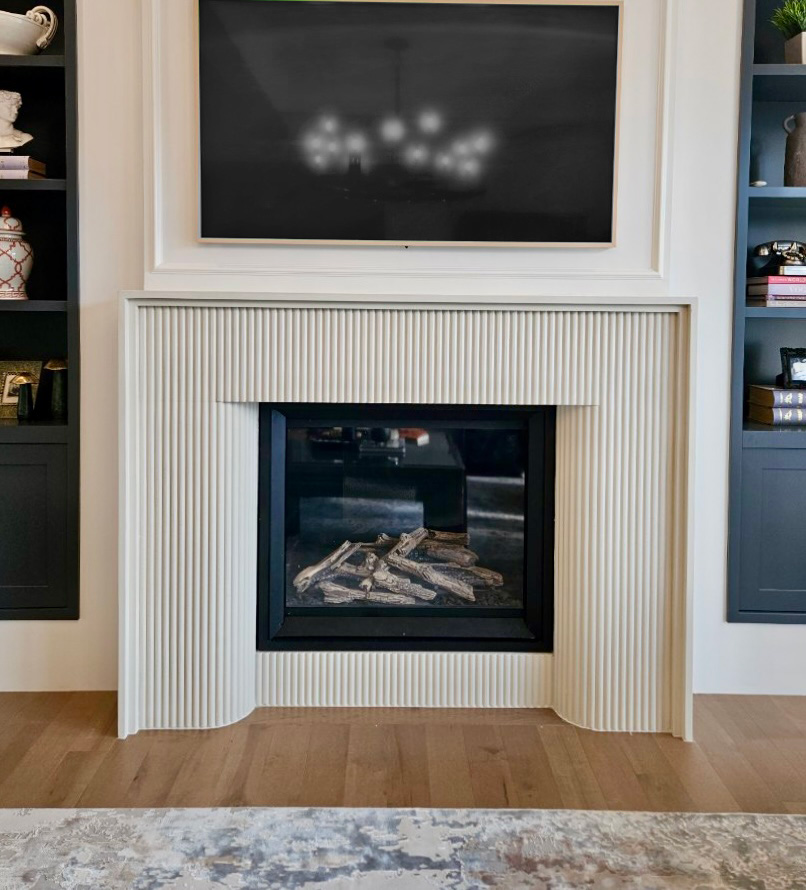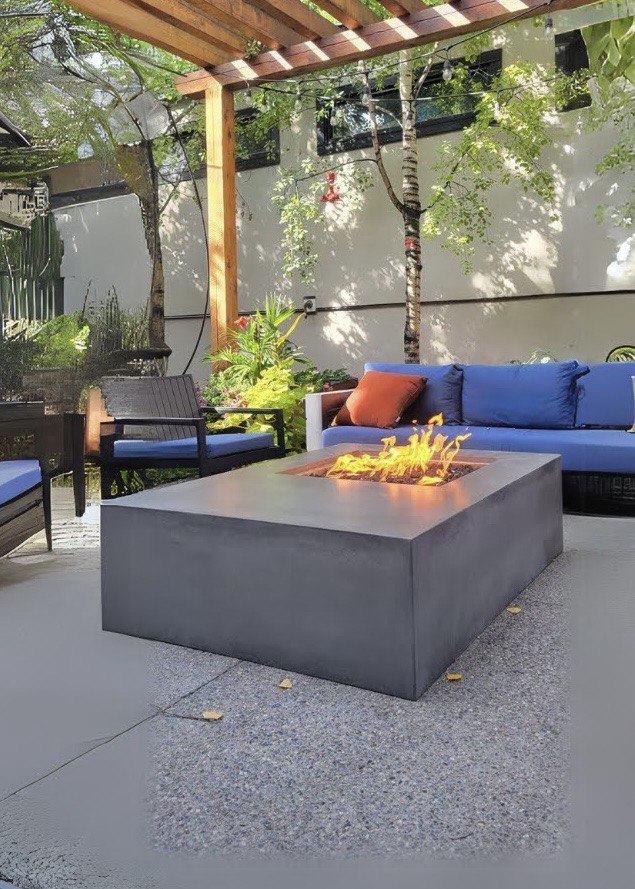As much as concrete is structural, it is also an artistic medium that can be hand-moulded and shaped into sculptural forms. When we use our hands to manipulate the concrete during casting, it becomes an artisanal piece suited to designer spaces.
To make hand-pressed concrete, casters pack damp concrete into a mould lump-by-lump and press it down gently with their palms and fingers. This technique creates patterns and indents on the surface once the concrete dries. You can use hand-pressed concrete for interior wall cladding, fireplace mantels and surrounds, range hood surrounds, countertops, planters, furniture, and artwork.
Different Finishes You Can Create Through Hand Pressing
Rustic Rough Finish
The first and most basic way of making hand-pressed concrete involves packing it in small portions, leaving tiny gaps as you go. Doing it this way will create random cracks and holes in the surface layer (the back should still be smooth for strength), giving the concrete a rough and rustic look. When precast as wall panels, rough hand-pressed concrete becomes a functional product that embeds handicraft into the fabric of the architecture.
Multicolour Marble
If you prefer a smooth finish, you can fill in the gaps created by hand-pressing to create a marble effect. The filling-in step happens at the end of the curing process once the hand-pressed concrete is completely dry. Neutral combinations, such as light grey with a dark grey vein, will retain the rustic look while giving the piece more polish. To make it less rustic and more designer, you could choose bold colour combinations like black and white.
Variegated Stripes
The way you press the concrete into the mould directly affects the type of pattern you get on the finished surface. If you want to turn hand-pressed concrete into precast wall panels, working in straight lines will help create vertical or horizontal stripes that echo the panels’ rectangular shape. To achieve this effect, you will need to alternate two different concrete colours during pressing. It helps to mark out the sections beforehand to attain neater edges.
Colour Blooms
The general rule of thumb is that you need larger patterns for bigger spaces. If you’re making interior wall cladding from oversized squares of hand-pressed concrete, you can get the correct scale by working with larger portions and leaving wider spaces during pressing. This technique will create blooms or blotches as opposed to delicate marbling.
Why Would You Choose Hand-Pressed Concrete Panels?
Hand-pressed concrete has a much greater artisanal appeal than smooth concrete, making it better for artistic spaces and vernacular architecture. It is tactile and visually striking and can be used as a centrepiece or focal point in an otherwise plain room. The casters at Sculptural Design make custom hand-pressed concrete for fireplaces, range hoods, interior wall cladding, and more. For more information, please contact us.




